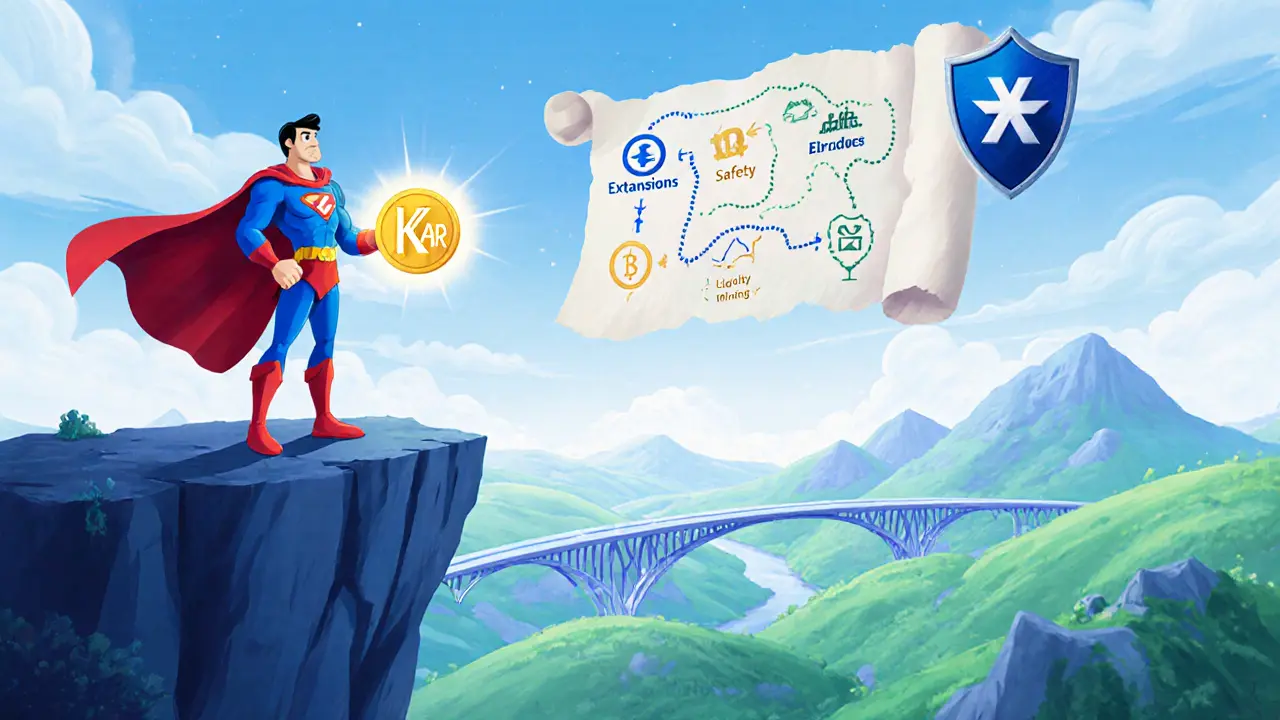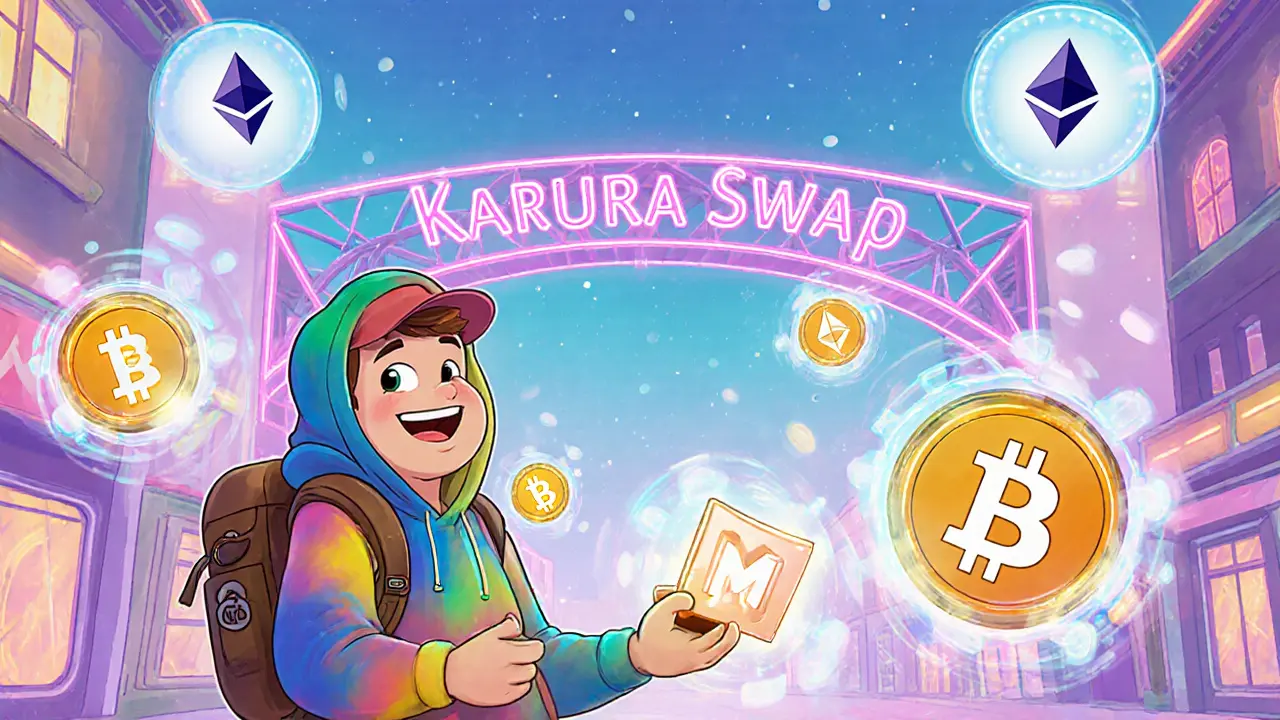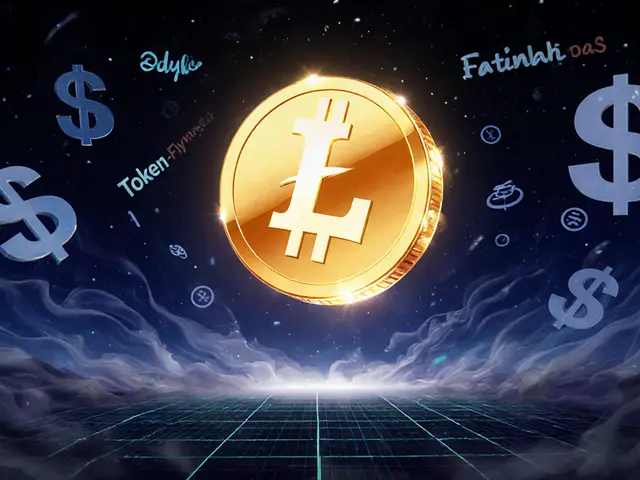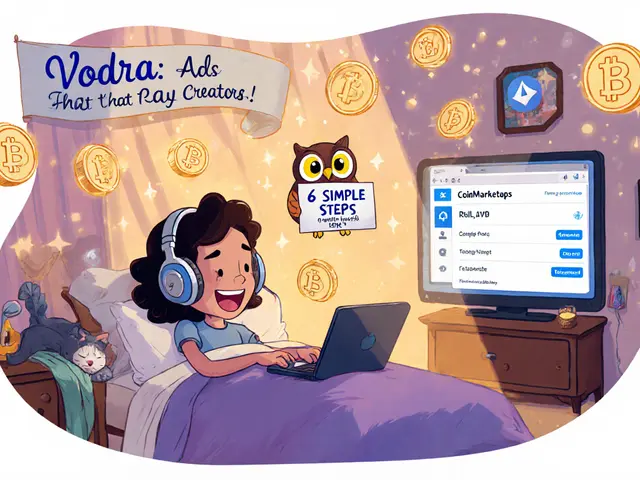Karura Swap Fee Calculator
Karura Swap uses a 0.3% trading fee structure. This fee is split between liquidity providers and the protocol's stability fund. You can pay fees in any token supported by the platform, not just KSM.
Fee Estimate
Enter your swap amount to see fee calculation
- 0.3% trading fee total
- 0.15% for liquidity providers
- 0.15% for protocol stability fund
Quick Take
Karura Swap is a niche decentralized exchange that lives on the Kusama network and serves users who already know the Polkadot ecosystem. It offers cross‑chain swaps, liquid staking, and a native stablecoin called kUSD. Fees are low, liquidity is modest, and the platform isn’t regulated, which means you keep full control of your assets. If you’re comfortable with DeFi concepts and want exposure to Kusama‑based projects, Karura Swap can be a useful addition to your toolbox.
What is Karura Swap?
Karura Swap is a decentralized exchange (DEX) that operates as the trading layer of Karura, the all‑in‑one DeFi hub on the Kusama network. Developed by the team behind Acala, Karura mirrors the functionality of its Polkadot counterpart while providing a test‑bed for new features. The exchange uses an automated market maker (AMM) model, meaning trades happen against liquidity pools rather than order books.
Core Features
- Automated Market Maker: Users trade against pooled assets, allowing instant swaps without a counter‑party.
- Cross‑chain support for native Kusama tokens, Polkadot assets, and ERC‑20 tokens via the EVM bridge.
- Liquid staking via LKSM, letting users earn staking rewards while keeping their tokens tradable.
- kUSD stablecoin lending and borrowing, with over‑collateralized loans to protect the protocol.
- Fee payment in any token held in the wallet, giving flexibility for users with low‑value holdings.
Fee Structure & Token Support
Trading fees are described as “negligible” by the platform. In practice, a typical swap incurs a 0.3% fee that is split between liquidity providers and the protocol’s stability fund. Because fees can be paid in any supported token, users often cover costs with cheap assets like aUSDT or native KAR, minimizing the impact on larger positions.
The exchange lists around 30 token pairs, mainly comprising KAR token, LKSM, and popular ERC‑20 assets such as USDC, USDT, and WETH. The limited selection reflects Karura’s focus on the Kusama ecosystem rather than mass market adoption.

Liquidity & Earning Opportunities
Liquidity providers (LPs) deposit equal values of two tokens into a pool and receive LP shares. Earnings come from two streams:
- Trading fees collected from every swap in the pool.
- Stability fee profit‑sharing from the kUSD protocol, which distributes a portion of the fees back to LPs.
During a pool’s bootstrapping phase, the platform mints a temporary supply to establish an initial price curve, ensuring fair price discovery. After bootstrapping, the pool behaves like a typical AMM, with liquidity providers bearing impermanent loss risk.
How to Get Started
- Install a wallet that supports Kusama (e.g., Polkadot{.js} or Fearless Wallet).
- Transfer KSM or other supported assets to your wallet.
- Visit apps.karura.network and connect your wallet.
- Select the “Swap” tab, choose your token pair, and confirm the transaction. Gas fees are paid in the token you select.
- If you want to earn fees, go to the “Liquidity” tab, add equal‑value tokens to a pool, and approve the smart contract.
Because the platform is fully decentralized, there’s no KYC step-just sign the transactions in your wallet.
Pros & Cons
| Pros | Cons |
|---|---|
| Low swaps fees payable in any token | Modest liquidity compared to large DEXs |
| Cross‑chain trading across Kusama, Polkadot, and ERC‑20 | Limited token pair selection |
| Liquid staking with LKSM keeps assets active | No regulatory oversight - higher user responsibility |
| Earn extra rewards from kUSD stability fees | Interface can feel technical for newcomers |
Comparison with Other Popular DEXs
| Feature | Karura Swap | Uniswap (Ethereum) | PancakeSwap (BSC) |
|---|---|---|---|
| Primary chain | Kusama (Substrate) | Ethereum | Binance Smart Chain |
| Cross‑chain support | Yes (Kusama, Polkadot, ERC‑20) | No (Ethereum‑only, bridges optional) | Limited (BSC‑centric) |
| Liquidity pools | ~30 pairs | Thousands of pairs | Hundreds of pairs |
| Typical swap fee | 0.3% (payable in any token) | 0.30% (ETH fee) | 0.20% (BNB fee) |
| Liquid staking | LKSM | No native, third‑party only | No native, third‑party only |
| Stablecoin lending | kUSD (over‑collateralized) | Various (via protocols) | Various (via protocols) |
| Regulatory status | Fully decentralized, unregulated | Unregulated DEX | Unregulated DEX |
For users who prioritize deep liquidity and a huge token catalog, Uniswap still leads. However, if you are already active in the Kusama/Polkadot sphere and want liquid staking plus a native stablecoin, Karura Swap offers a unique blend.

Future Outlook for KAR Token
The native governance token KAR token fuels voting on protocol upgrades and fee distribution. Forecasts from several analytics sites place its 2025 price in the $0.02‑$0.03 range, though predictions vary widely due to overall crypto volatility. Upcoming roadmap items include deeper EVM integration, expanded cross‑chain bridges, and additional liquidity mining campaigns, all of which could boost demand for KAR.
Risks & Safety Tips
- Smart‑contract bugs can lead to loss of funds. Review audit reports before committing large sums.
- Impermanent loss affects LPs when the price of paired assets diverges sharply.
- Because the platform is unregulated, there is no recourse if something goes wrong.
- Transaction fees on Kusama can spike during network congestion; keep a small reserve of KSM for gas.
Start with a modest amount, test swaps, and only move larger balances once you’re comfortable with the UI and fee dynamics.
Final Thoughts
Karura Swap fills a specific niche: a DeFi hub for the experimental Kusama network that couples AMM trading with liquid staking and a stablecoin lending module. It isn’t built for mass‑market traders looking for every meme token, but for developers and investors already in the Polkadot ecosystem, it offers low fees, cross‑chain flexibility, and a pathway to earn from staking without locking assets.
Karura Swap review - this article gives you the details you need to decide whether to add the platform to your crypto toolbox.
Frequently Asked Questions
Is Karura Swap safe to use?
The protocol is open‑source and has undergone third‑party audits, but like any DeFi platform, it carries smart‑contract risk. Use small amounts first and keep your private keys secure.
What wallets work with Karura Swap?
Polkadot{.js} extension, Fearless Wallet, and any wallet that supports the Substrate ecosystem can connect to the DEX.
Can I pay swap fees with any token?
Yes. The platform lets you choose any token in your wallet to cover the transaction fee, which reduces the need to hold KSM solely for gas.
How does liquid staking work on Karura?
You lock KSM and receive LKSM tokens, which represent your staked assets plus earned rewards. LKSM can be traded or used as liquidity, keeping your capital active.
Is there a KYC requirement?
No. Karura Swap is fully decentralized, so you interact directly with smart contracts without providing personal information.






Bruce Safford
Look, the 0.3% fee on Karura Swap isn’t just a random number – it’s a hidden tax that the protocol developers never tell you about. They push the fee onto the liquidity providers, who then pass it to us, the users, while the “stability fund” pockets the rest. It’s essentially a backdoor revenue stream for the core team, and they hide it behind the slick UI. The fact they let you pay in any token like KAR just means you can drain low‑value assets to cover the same cost. Anyone not watching the fee breakdown is basically handing over cash on a silver platter.
Jordan Collins
Karura Swap’s fee model is straightforward: 0.3% of each trade, split evenly between liquidity providers and the protocol’s stability fund. This split incentivizes liquidity while maintaining a buffer for market volatility. Users can settle fees with a variety of tokens, which adds flexibility without compromising the underlying rate. The calculator provided in the article accurately reflects the fee distribution for any given trade size. Overall, the structure aligns with common DEX practices while offering optionality for fee payment.
Andrew Mc Adam
Karura Swap, perched on the Kusama parachain, brings a breath of fresh air to the decentralized exchange landscape.
Its architecture leverages the robust security of Kusama while delivering lightning‑fast finality for traders.
The 0.3% fee, modest at first glance, actually serves multiple purposes that seasoned users should understand.
Half of that fee rewards liquidity providers, a crucial incentive that keeps pools deep and spreads slippage thin.
The other half fuels the stability fund, a safety net designed to absorb shocks during market turbulence.
Because the fee can be paid in any supported token, users gain the freedom to select a low‑impact asset for fee settlement.
For instance, opting to use KAR rather than KSM for fees can preserve capital when executing large swaps.
The built‑in calculator in the interface accurately translates any trade amount into the exact fee owed.
It does so by multiplying the trade value by 0.3%, then dividing the result equally between the two beneficiaries.
Traders who ignore this breakdown may unintentionally overpay, especially when swapping volatile assets.
Moreover, the liquidity pools on Karura are backed by a diverse set of tokens, which helps mitigate concentration risk.
This diversity also means that arbitrage opportunities arise more frequently, attracting sophisticated bots.
While the platform boasts a user‑friendly UI, power users should still verify on‑chain data for transparency.
Overall, Karura Swap offers a balanced fee structure that rewards participants and safeguards the ecosystem.
In my experience, its blend of speed, flexibility, and thoughtful economics makes it a worthy addition to any trader’s toolkit.
Shrey Mishra
While the concerns about hidden taxes are understandable, the fee split is transparent on the platform’s documentation page. The protocol explicitly states the 0.15% allocation to liquidity providers and the same amount to the stability fund. Users can verify these percentages on‑chain, which mitigates the notion of a covert revenue stream. It is essential, however, to differentiate between perceived opacity and the actual open‑source code that governs fee distribution.
Ken Lumberg
It is morally indefensible for any DeFi project to impose fees without explicit user consent, and Karumba Swap falls short of that ideal. The decision to allow fee payment in any token feels like a gimmick to obscure the real cost to participants. Ethical finance demands clarity, and this platform’s model leaves too much room for interpretation, which is unacceptable.
Blue Delight Consultant
While I respect the moral stance you take, the flexibility to choose a fee token can also be seen as a user‑empowering feature rather than a deception. The protocol’s code is openly auditable, and the fee percentages are hard‑coded, leaving little room for hidden manipulation. Nonetheless, transparency in communication remains paramount to maintain trust among the community.
Michael Bagryantsev
For newcomers, it helps to think of the fee split as a two‑way street: liquidity providers get compensated, and the stability fund acts as a safeguard. This dual benefit keeps pools healthy and protects traders during volatile periods. Taking a moment to run the fee calculator can demystify the numbers and reinforce confidence in using Karura Swap.
Maria Rita
Paying fees in KAR is a smart way to keep costs low.
Jordann Vierii
The fee structure mirrors that of other leading DEXs, but Karura’s ability to accept multiple fee tokens adds a layer of cultural flexibility for global users.
Lesley DeBow
One might say that every fee is a small tribute to the network’s collective consciousness 😊. Yet the act of paying with any token transforms that tribute into a personalized offering, echoing ancient rites of exchange.
DeAnna Greenhaw
Upon meticulous examination of Karura Swap’s fee architecture, one discerns an elegant synthesis of economic prudence and technical sophistication. The 0.3% levy, judiciously apportioned, serves not merely as a revenue mechanism but as a conduit for sustaining liquidity depth. By allocating half of this charge to liquidity providers, the protocol ensures that market participants are duly compensated for the capital they entrust. The residual half, earmarked for the stability fund, functions as a bulwark against market perturbations, thereby preserving systemic equilibrium. Moreover, the liberty afforded to users to settle fees in a plethora of tokens epitomizes a progressive ethos, eschewing the rigidity of monolithic fee denominations. This flexibility, however, necessitates a circumspect appraisal by the discerning trader, who must weigh the relative market values of chosen fee assets. In sum, the fee schema encapsulates a harmonious balance between incentivization and risk mitigation, rendering Karura Swap a commendable contender in the decentralized exchange arena.
Luke L
While the prose is admirable, the reality is that such fee models are not unique to any one nation’s blockchain, and suggesting otherwise borders on parroting nationalist rhetoric.
Cynthia Chiang
It’s important to remember that the fee calculator is only as accurate as the input values you provide; a simple typo in the amount can lead to misleading fee estimates.
Hari Chamlagai
Indeed, precision matters, but seasoned users often cross‑verify on‑chain data regardless of calculator outputs, ensuring that even typographical errors are caught before execution.
Ben Johnson
So you’re telling me I can pay fees in a meme token and still expect the same level of service? Interesting.
Jason Clark
Precisely; the fee rate remains constant irrespective of the token chosen, though the actual cost in fiat terms will vary with the token’s market price.
Jim Greene
Love the flexibility! 🎉 Being able to pick a low‑volatility token for fees makes every trade feel a little safer.
Della Amalya
When you step onto Karura’s trading floor, you’re not merely swapping assets; you’re partaking in a choreography where every fee is a subtle step that maintains the rhythm of the market.
Teagan Beck
Totally get that vibe, but at the end of the day it’s just a 0.3% cut.
Kim Evans
Remember to check the current gas fees on Kusama before executing large swaps; they can significantly affect the overall cost 😎.
Steve Cabe
The platform’s fee structure may be sound, yet it’s worth noting that the underlying infrastructure benefits from Kusama’s American‑centric development focus.